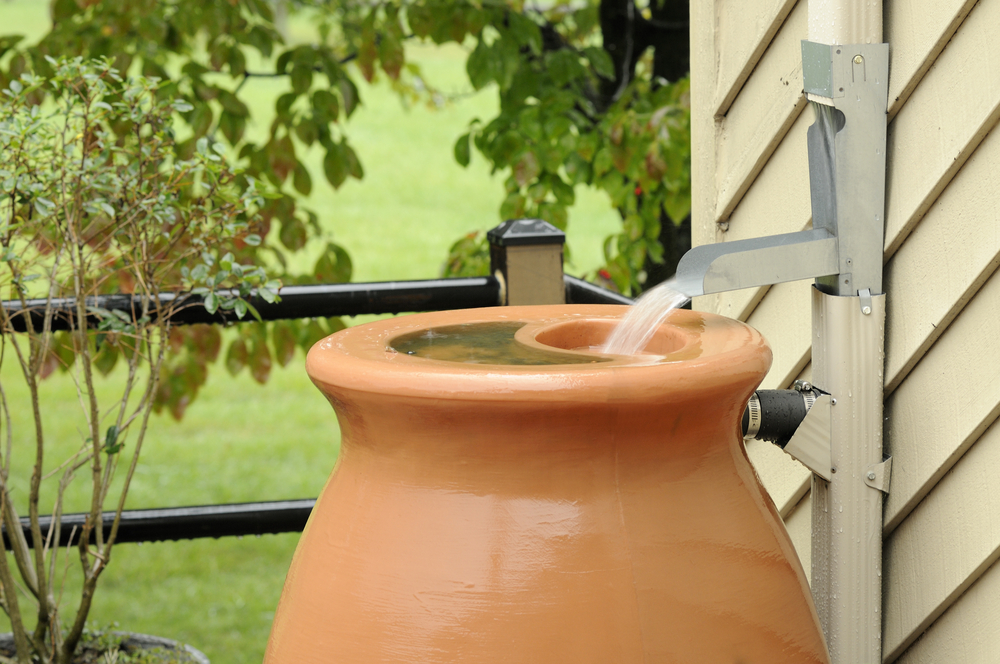Long promoted as a tool for water conservation, rain barrels are emerging as a simple low-cost method of on-site stormwater management.
Collecting roof runoff is valuable whether the goal is to save water or manage rain where it falls. But if the goal is runoff volume reductions, municipalities need to promote the right messages.
- Install more rain barrels. One or two barrels might hold all the water the average gardener wants, but they won’t come close to collecting the runoff from most roofs. In order to capture the first 10mm from a 120 m² roof (an amount that could be expected to fall within a few minutes, nearly every year), six standard rain barrels would be needed.
- Direct overflows to permeable areas. Given that most homeowners won’t be able to install enough rainwater harvesting capacity to capture larger storms, it’s important that they be advised to set up rain barrels so overflows go to lawns or gardens – or better yet, rain gardens, designed to collect larger volumes of water.
- Drain before next rain. People concerned about water conservation often save the water in anticipation of a dry spell. But to slow down peak flows, barrels must be emptied before it rains again. A soaker hose will slowly release water over time. One company markets a networked grid of rain barrels that can be emptied remotely – though this has yet to be tested on the ground.
- Rain barrel safety and maintenance. Whether for water conservation or stormwater management, homeowners need guidance about safe installation and maintenance of their barrels. Rainbarrel.ca, which partners with local community groups to hold rain barrel fundraisers, provides instructions and videos. Before the winter freeze, barrels need to be emptied and disconnected, and downspouts directed at least eight feet away from the foundation. If not, all that water can end up in the basement.
Other forms of green infrastructure can manage more rainfall at a greater scale – but for homeowners, who have little available space and who are already familiar with the concept, rain barrels can be a great entry point into the world of on-site stormwater management.
Many municipalities provide incentives for rain barrels, including discounts, rebates, or installation assistance. Some, like the City of Guelph, promote larger scale rainwater harvesting through rebates for cisterns. Rainwater harvesting can be a great opportunity for collaboration between stormwater departments and water utilities, promoting both stormwater capture and water conservation.
And the impact can be significant – in Melbourne, Australia, water usage was cut by half over the course of a 13 year drought through rainwater harvesting and conservation.
This article was published in The Umbrella Stormwater Bulletin Issue #37.
Poll
How many rain barrels do you have installed at your house?
- None (28%, 5 Votes)
- 1-2 (50%, 9 Votes)
- 3-4 (11%, 2 Votes)
- 5+ (11%, 2 Votes)
- I’m not able to harvest rainwater where I live. (0%, 0 Votes)
Total Voters: 18


